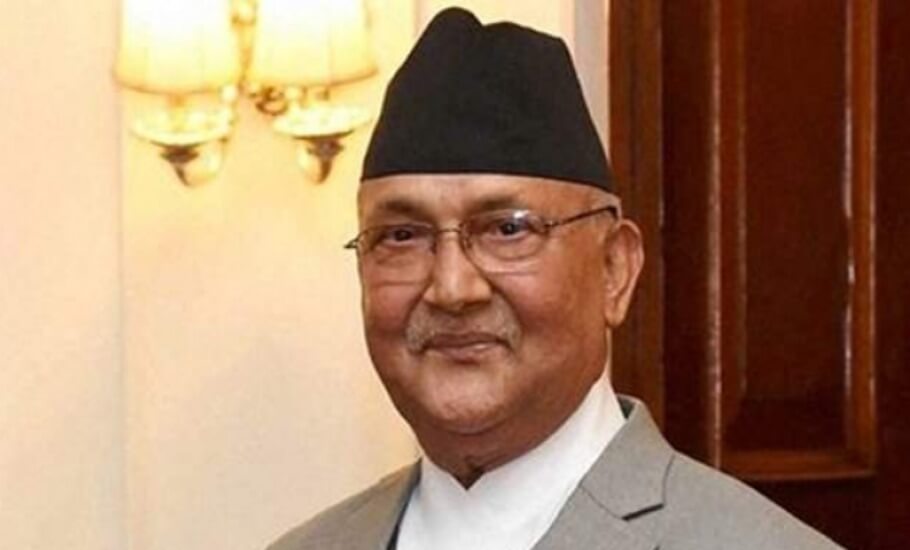
Nepal PM Oli recommends Parliament dissolution; opposition cries foul

Nepal’s beleaguered Prime Minister K.P. Sharma Oli on Sunday sprang a surprise on his rivals and recommended the dissolution of Parliament, a controversial move amidst a prolonged tussle for power between him and former premier Pushpa Kamal Dahal Prachanda.
An emergency Cabinet meeting chaired by Prime Minister Oli decided to recommend President Bidya Devi Bhandari for the dissolution of Parliament’s House of Representatives, a senior Standing Committee member of the ruling Nepal Communist Party (NCP) told PTI.
Also read: Nepal introduces new text books with revised map incorporating Indian areas
The 275-member House of Representatives, which is the lower house of Parliament, was elected in 2017.
Today’s Cabinet meeting decided to recommend the President to dissolve the Parliament, said Barshaman Pun, Energy Minister in Oli’s Cabinet, The Kathmandu Post reported.
Prime Minister Oli reached Rashtrapati Bhawan with the decision of the council of ministers.
The move comes as the intra-party feud reached its climax in the ruling NCP which has been witnessing months-long tussle between two factions, one led by 68-year-old Oli and party’s chairman and another led by 66-year-old Prachanda, also the executive chair of the party and former premier.
Senior leader of the ruling NCP and former prime minister Madhav Kumar Nepal has termed the move as unconstitutional. Constitutional experts have also termed the move to dissolve Parliament as unconstitutional.
As per the provision of Nepal’s Constitution, there is no legal clause allowing the government to dissolve the Parliament of a majority government, they said, adding that Oli’s move is likely to be challenged in the court.
Also read: Nepal to send revised nation map to India, UN, international community
As long as there is a possibility of forming the government, there is no provision to dissolve the House, said constitutional expert Dinesh Tripathi. Meanwhile, the main Opposition, Nepali Congress (NC), has called an emergency meeting of the party on Sunday.
The move comes a day after the NC and the Rastriya Janata Party decided to ask the President for a special session of Parliament.
NC president and former prime minister Sher Bahadur Deuba recently came down heavily on the Oli government for its attempts to impose one-party totalitarian rule in the country. He blamed the government for not working toward controlling growing cases of rape and corruption.
“The government is indulged in corruption even in course of dealing with the COVID-19 pandemic,” Deuba alleged last week.
Separately, Prachanda and Madhav Nepal faction has been urging Oli to quit the post of Prime Minister amidst growing accusation and counter-accusation between the two factions in the ruling NCP.
On November 13, in his 19-page political document presented at the NCP’s Secretariat meeting, Prachanda criticised Oli for failing to properly run both the government and the party, and even accused Oli of corruption.
Oli, known for his pro-China leanings, however, denied the allegations and challenged Prachanda to legally prove the graft charges or apologise.
Oli rejected his accusations that he was running the government without consulting the party, and instead blamed his rival for non-cooperation in handling the party’s affairs.
The prime minister had submitted a separate 38-page political document in response to the allegations made by Prachanda.
Also read: Stuck between India-China rivalry, hapless Nepal poised for rough ride
In June, Oli claimed that efforts were being made to oust him after his government redrew the country’s political map by incorporating three strategically key Indian territories.
India had termed as ‘untenable’ the ‘artificial enlargement’ of the territorial claims by Nepal after its Parliament unanimously approved the new political map of the country featuring Lipulekh, Kalapani, and Limpiyadhura areas which India maintains belong to it.
The NCP, formed after the merger between Oli led CPN-UML and Prachanda led CPN (Maoist Centre) in May 2018, is divided along the two factions led by Oli and Prachanda. The Prachanda faction enjoys a majority in the nine-member Secretariat, the highest decision-making body of the party.
After several rounds of negotiations, the Standing Committee of the party on September 11 endorsed a 15-point decision drafted by a six-member task force which was formed in a bid to resolve the long-standing dispute between the two factions, but to no avail.


